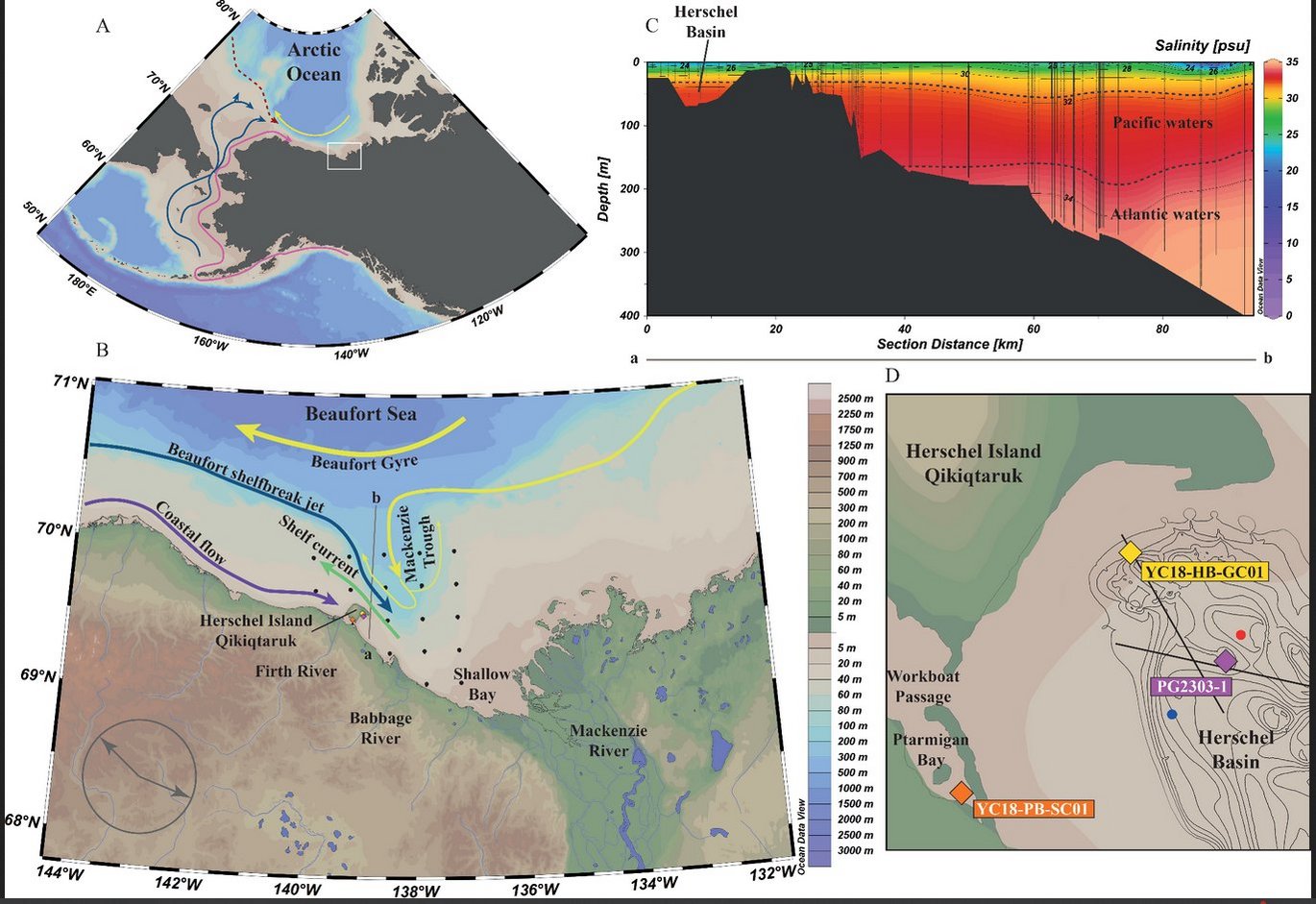Microfaunal Recording of Recent Environmental Changes in the Herschel Basin, Western Arctic Ocean
New publication by Jade Falardeau, Anne de Vernal, Marit-Solveig Seidenkrantz et al.

Abstract:
Microfaunal assemblages of benthic foraminifera, ostracods, and tintinnids from two marine sediment cores retrieved from the Herschel Basin of the Canadian Beaufort Sea shelf document relationships with environmental parameters such as salinity, sea-ice cover, and turbulence. Cores YC18-HB-GC01 and PG2303-1 were collected at 18 and 32 m water depth, respectively. At these sites, sediment accumulation rates range between 0.6 and 1.7 cm yr–1 allowing a near-annual temporal resolution over the last 50 years. Multivariate analyses indicate that benthic foraminiferal assemblages respond primarily to food supply. Dissimilarities between the microfaunal assemblages of the two cores are mainly the result of bottom water salinity levels linked to water depth. High abundance of the benthic foraminiferal species Elphidium clavatum and occurrences of Elphidium bartletti point to varying, but relatively low, salinities at the shallow core site YC18-HB-GC01, which may be affected by variations in the summer halocline depth. Higher species diversity and more abundant Cassidulina reniforme and Stainforthia feylingi characterize the deeper core PG2303-1, which might reflect more stable conditions and higher bottom-water salinities throughout the studied time interval. The most important microfaunal shift of the last 50 years, observed in the shallower longer core YC18-HB-GC01, occurred at the turn of the 21st century. Prior to ∼2000 CE, the presence of Islandiella norcrossi indicates more stable and saline conditions. Since ∼2000 CE, increased abundances of Haynesina nivea and of the ciliate Tintinnopsis fimbriata suggest decreased salinity and increased turbidity. An increased abundance of Eoeponidella pulchella after ∼2000 CE suggests a concurrent increase in productivity in the last two decades. This shift is nearly synchronous with a decrease in mean summer sea-ice concentration, which can play an important role in bottom water stability on the shelf. Easterly winds can induce a reduction in the sea-ice cover, but also foster a westward spreading of the Mackenzie River plume and the upwelling of nutrient-rich Pacific waters onto the shelf. Both factors would explain the increased freshening and productivity of the Herschel Basin. The last two decades were also marked by a decrease in ostracod abundance that may relate to higher water turbidity. This study shows that combining information from benthic foraminifera, ostracods, and tintinnids provides a comprehensive insight into recent hydrographic/climatic changes in nearshore Arctic habitats, where productivity is critical for the food security of local communities.
